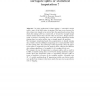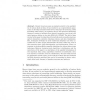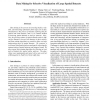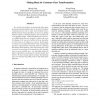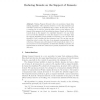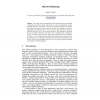VLDB
1994
ACM
14 years 11 months ago
1994
ACM
Spatial data mining is the discovery of interesting relationships and characteristics that may exist implicitly in spatial databases. In this paper, we explore whether clustering ...
PKDD
1999
Springer
14 years 11 months ago
1999
Springer
Abstract. In many applications of data mining a - sometimes considerable - part of the data values is missing. This may occur because the data values were simply never entered into...
HIPC
1999
Springer
14 years 11 months ago
1999
Springer
Abstract. Recent times have seen an explosive growth in the availability of various kinds of data. It has resulted in an unprecedented opportunity to develop automated data-driven ...
BTW
1999
Springer
14 years 11 months ago
1999
Springer
Abstract: Spatial data mining algorithms heavily depend on the efficient processing of neighborhood relations since the neighbors of many objects have to be investigated in a singl...
DAWAK
2000
Springer
14 years 11 months ago
2000
Springer
Abstract The application of data mining algorithms needs a goal-oriented preprocessing of the data. In practical applications the preprocessing task is very time consuming and has ...
ICTAI
2002
IEEE
14 years 12 months ago
2002
IEEE
Data mining is the process of extracting implicit, valuable, and interesting information from large sets of data. Visualization is the process of visually exploring data for patte...
ICDM
2003
IEEE
15 years 8 days ago
2003
IEEE
We consider the problem of mining high-utility plans from historical plan databases that can be used to transform customers from one class to other, more desirable classes. Tradit...
ICDM
2003
IEEE
15 years 8 days ago
2003
IEEE
A major obstacle to fully integrated deployment of many data mining algorithms is the assumption that data sits in a single table, even though most real-world databases have compl...
CINQ
2004
Springer
15 years 12 days ago
2004
Springer
Mining Frequent Itemsets is the core operation of many data mining algorithms. This operation however, is very data intensive and sometimes produces a prohibitively large output. I...
CASDMKM
2004
Springer
15 years 12 days ago
2004
Springer
This paper conducts experiments with three skewed data sets, seeking to demonstrate problems when skewed data is used, and identifying counter problems when data is balanced. The b...

